They can simply create a beautiful place to be: How to make the perfect garden building
A new generation of carefully considered garden buildings is offering places to work, play, cook, bathe and sleep.
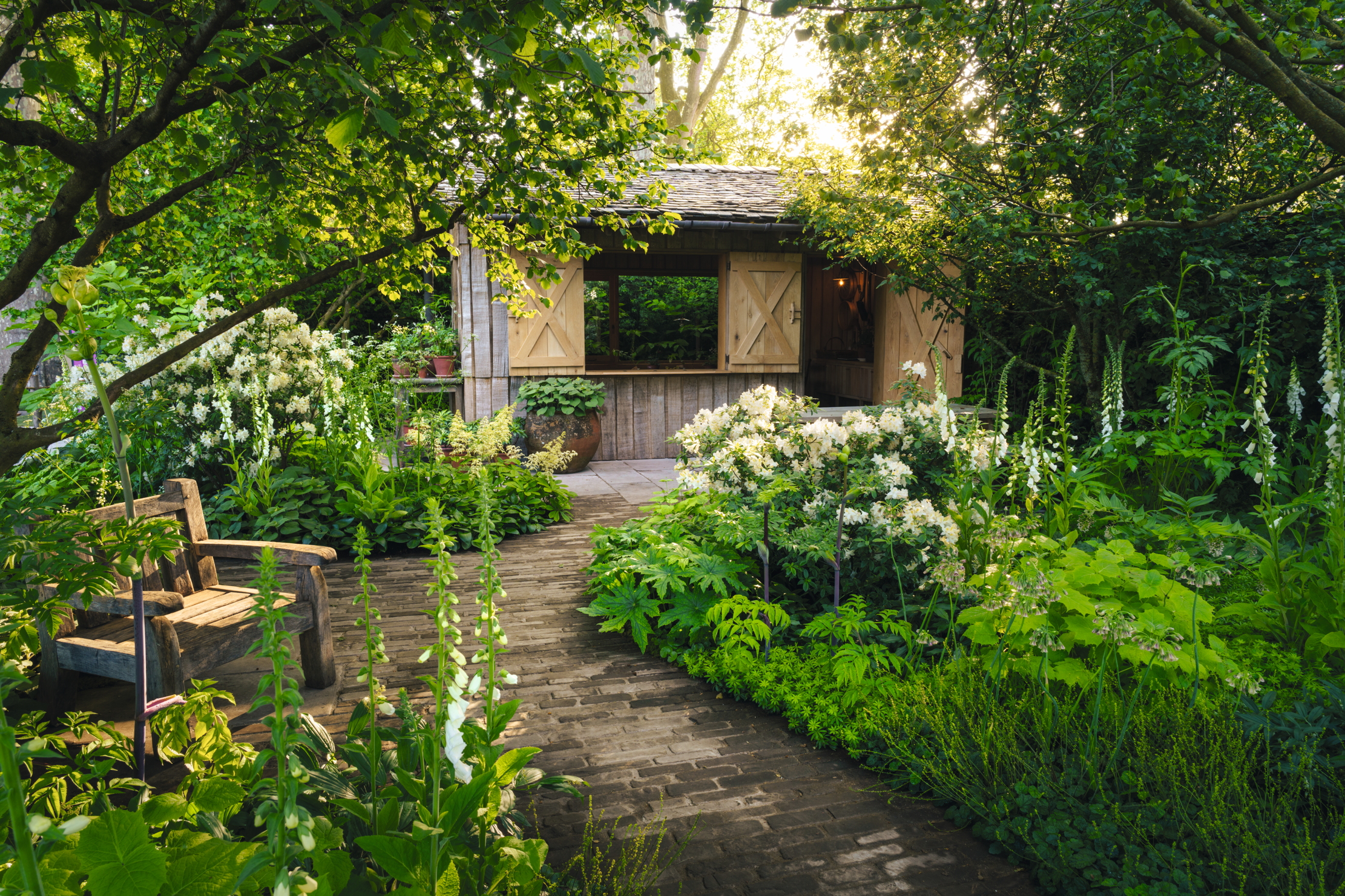
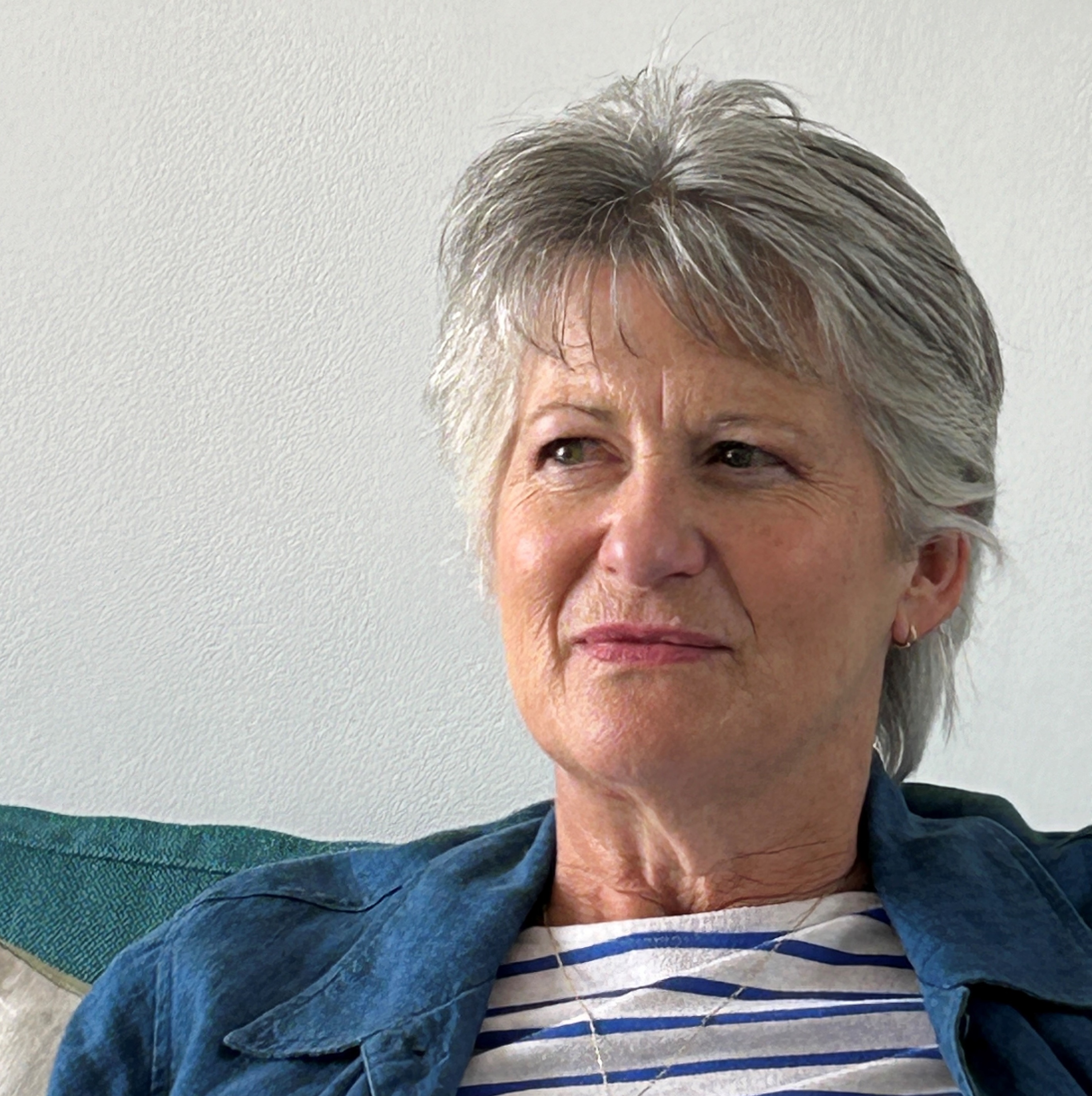
This year’s RHS Chelsea Flower Show offered a deep seam of inspiration for anyone planning to make the most of their garden with an outdoor structure. A notable attraction was Tom Stuart-Smith’s beautifully crafted shed, at the end of a winding path, shaded by hazel trees and surrounded by woodland planting.
Designed in collaboration with his architect son, Ben Stuart-Smith, and bespoke furniture-maker and woodworker Fenton Scott-Fielder, the ‘über-hut’ included a small AGA cooker at its heart. The structure is clad in cleft oak from Dorset with a meticulously made planed-beech interior. ‘I wanted it to have an earthy, crafted quality; to be simply, but beautifully made with a mix of clean lines and soft edges,’ explains Mr Stuart-Smith Snr.
Over the years, Mr Scott-Fielder has been called upon to create a wide variety of garden structures, from simple timber-frame sunshades, sheds and cabins to saunas, outdoor kitchens, mystical ‘temples’ and even a sculptural façade to a woodland grotto made from vast tree trunks. ‘But they all share the same purpose — to increase enjoyment outside,’ he says. ‘If you are lucky enough to have a garden, why not make more use of it? I love spending time outside and others do too.’
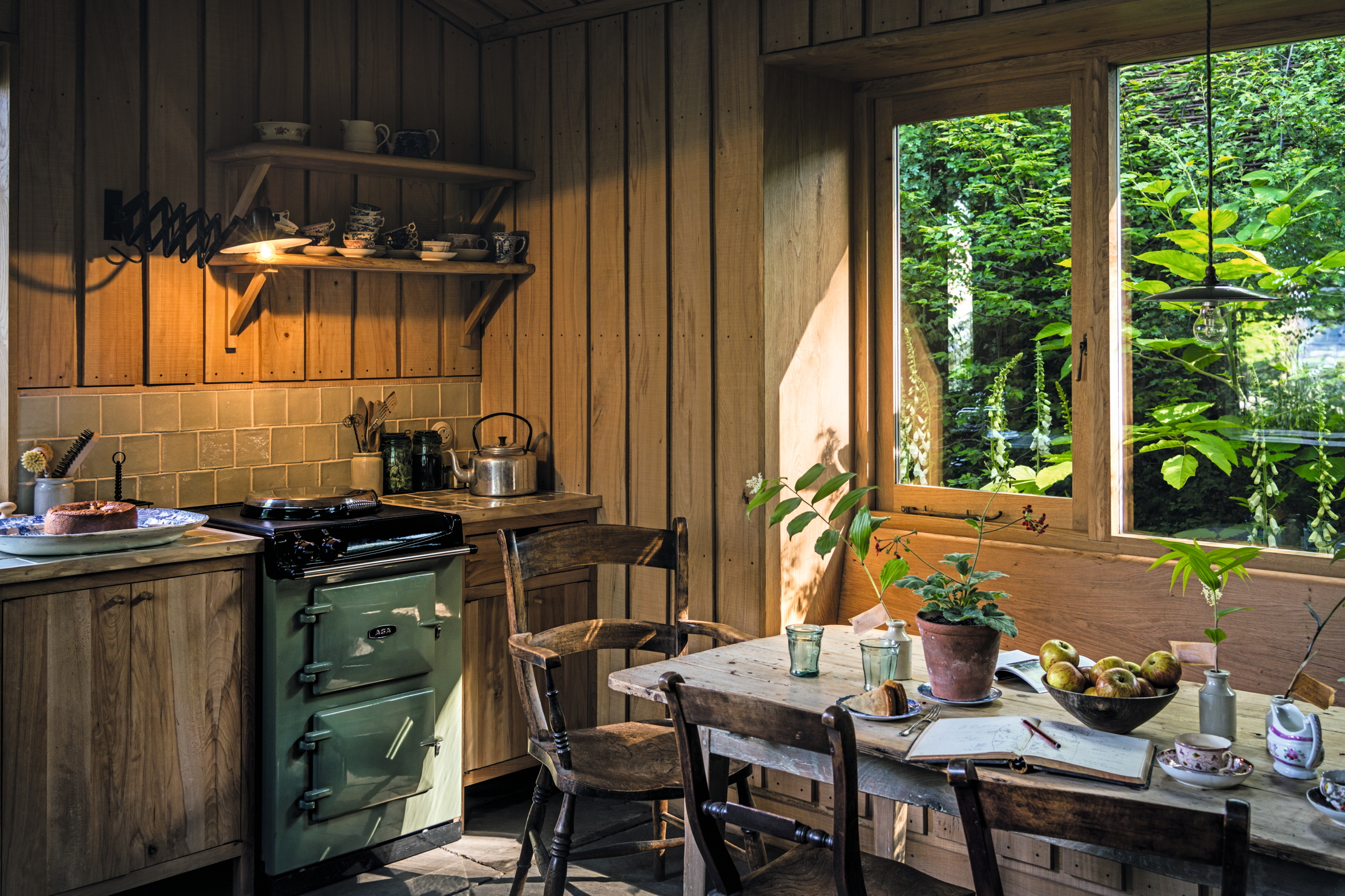
Although he favours creating structures, made from sustainable native hardwoods, that sit comfortably in their surroundings, the starting point is always to establish what the building will be used for. ‘If you are planning a shed to be used for more than storing the mower, then you may want to think about a heat source, insulation, lighting and plumbing to make it comfortable through the year, even in winter,’ he says. ‘If the structure is close to the house, power supply should be relatively straightforward.’ His top tip? ‘Get a good designer on board from the beginning,’ he says. ‘Their advice can be invaluable in creating a structure that responds to the space and your needs. It should be possible to make something very lovely.’
Blue Forest created a Botanical Treehouse at this year’s show, in collaboration with the garden and landscape designer Randle Siddeley, that demonstrated the multipurpose possibilities of outdoor structures (as the company did when working with Isabella Worsley at Callow Hall in Derbyshire on a collection of treehouse suites).
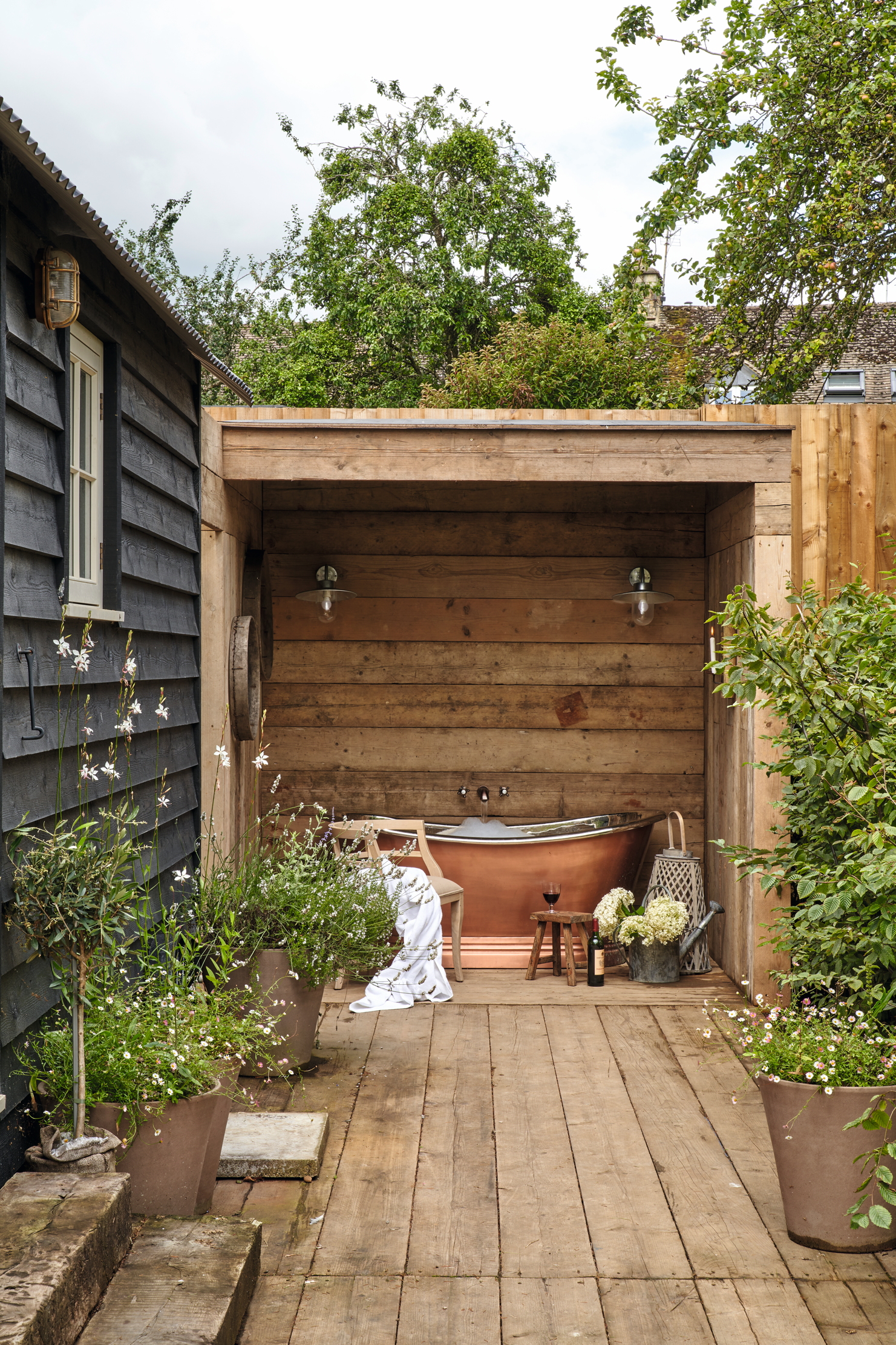
Neptune, on the other hand, opted for an alfresco dining room, showcasing a bespoke oak pergola. It was dressed with an awning made from colourful outdoor fabric to shade an elegantly dressed table from both sun and drizzly grey skies. ‘Our motto for successful outdoor dining is to always be prepared for whatever the British weather might bring,’ says design director Fred Horlock.
The interior designer Bee Osborn agrees that simple solutions can often be surprisingly effective. At her cottage in the Cotswolds, she has recently added an outdoor copper bath, set under an uncomplicated shelter made from reclaimed scaffolding boards. ‘To be able to bathe under the stars at night or even in the snow in winter is wonderful — novel and exciting,’ she says. The bath is fully plumbed with hot water, but is also used by her family as an ice bath after exercise.
Sign up for the Country Life Newsletter
Exquisite houses, the beauty of Nature, and how to get the most from your life, straight to your inbox.
'Clients feel that they can add something different and a sense of fun to a home, as well as bringing in a way of getting closer to nature'
Mrs Osborn is seeing increased demand for outdoor structures of all kinds. ‘Clients feel that they can add something different and a sense of fun to a home, as well as bringing in a way of getting closer to nature,’ she says. ‘We all lead such busy lives, so “toes in the sand” moments of relaxation are ever more important.’ Mrs Osborn’s home also includes a shepherd’s hut, originally used for accommodation when renovations were underway in the cottage. The hut has become a permanent fixture, surrounded by wildflowers in its own corner of the garden. ‘Homes need to be flexible and ideally able to stretch and expand when family and friends come to stay,’ she says. ‘The hut acts as an extra bedroom, with its own kitchen and bathroom, and everyone says its sense of romance makes them feel as if they are on holiday.’
Also on show at Chelsea were a sauna and a garden privy, both in shepherd’s huts on iron wheels by Plankbridge. The sauna is based on the proportions of Plankbridge’s full-size shepherd’s huts and is designed to offer the therapeutic benefits of a sauna in an idyllic garden setting. The 4ft by 4ft garden privy is more compact, described as a ‘nostalgic throwback to the world of the Victorian gardener’, but eminently practical, too. It can be wheeled into position and connected to the mains in the garden or fitted with solar lighting and a compost loo for use in more remote spots.
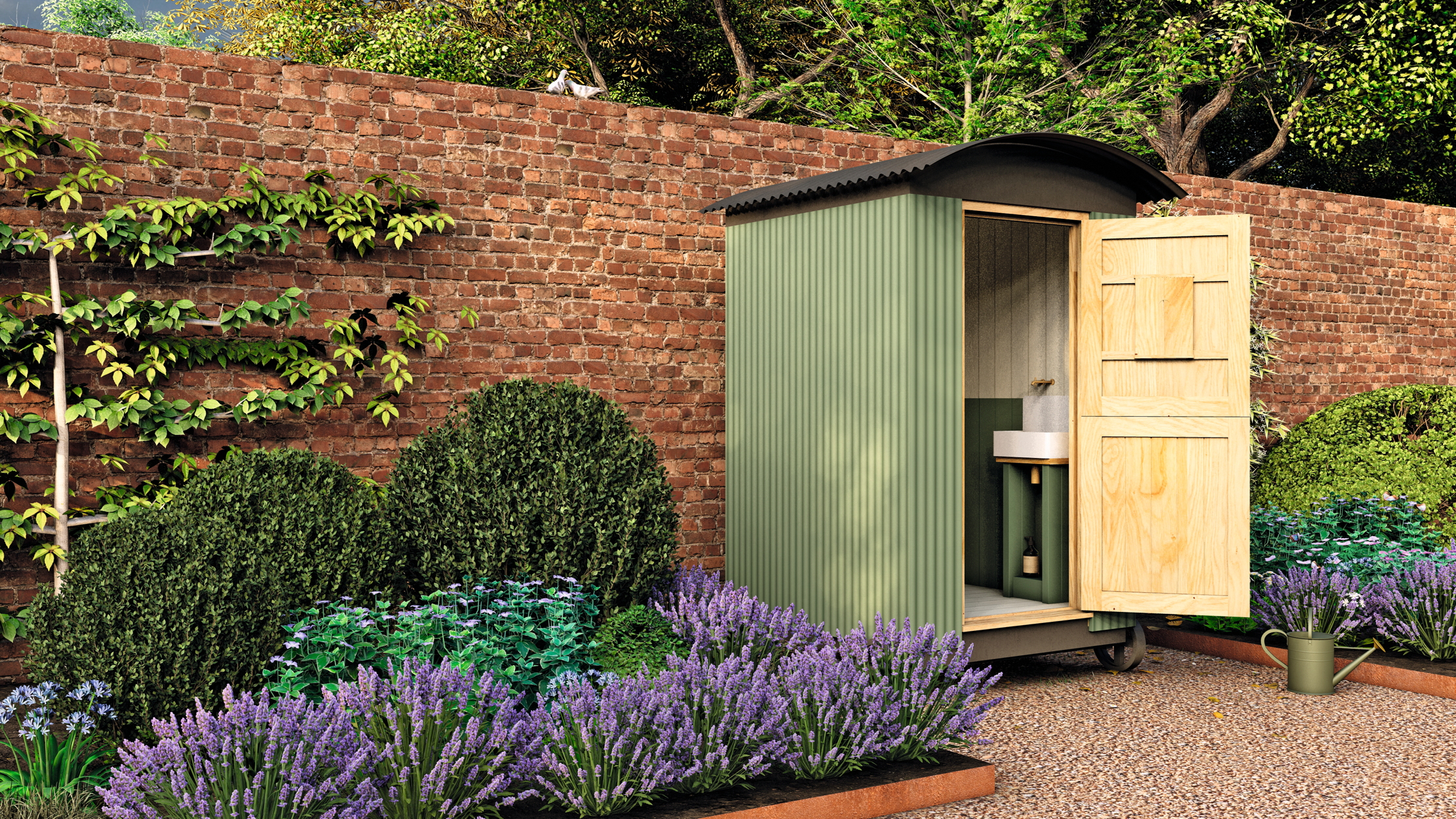
Another way to make greater use of a garden is to invest in a prefabricated ‘plug and play’ style structure. Although planning permission may be required, as for all kinds of outdoor structures, especially those with heating and running water (check the Government’s online planning portal for advice), they are offered as a neat, efficient solution.
‘They are designed to fill the gap of providing extra space without the disruption and cost of an extension,’ says Koo Akers, director of Bonni Outbuildings. ‘People like using them as a quiet, warm and comfortable space to enjoy the garden all year, as well as home offices, art studios, gyms, pool houses, extra living rooms and entertaining spaces.’ Made with corrugated tin or timber cladding, they are designed to age gracefully in an outdoor setting and are built to be well insulated and energy efficient. ‘They can simply create a beautiful place to be,’ she says.
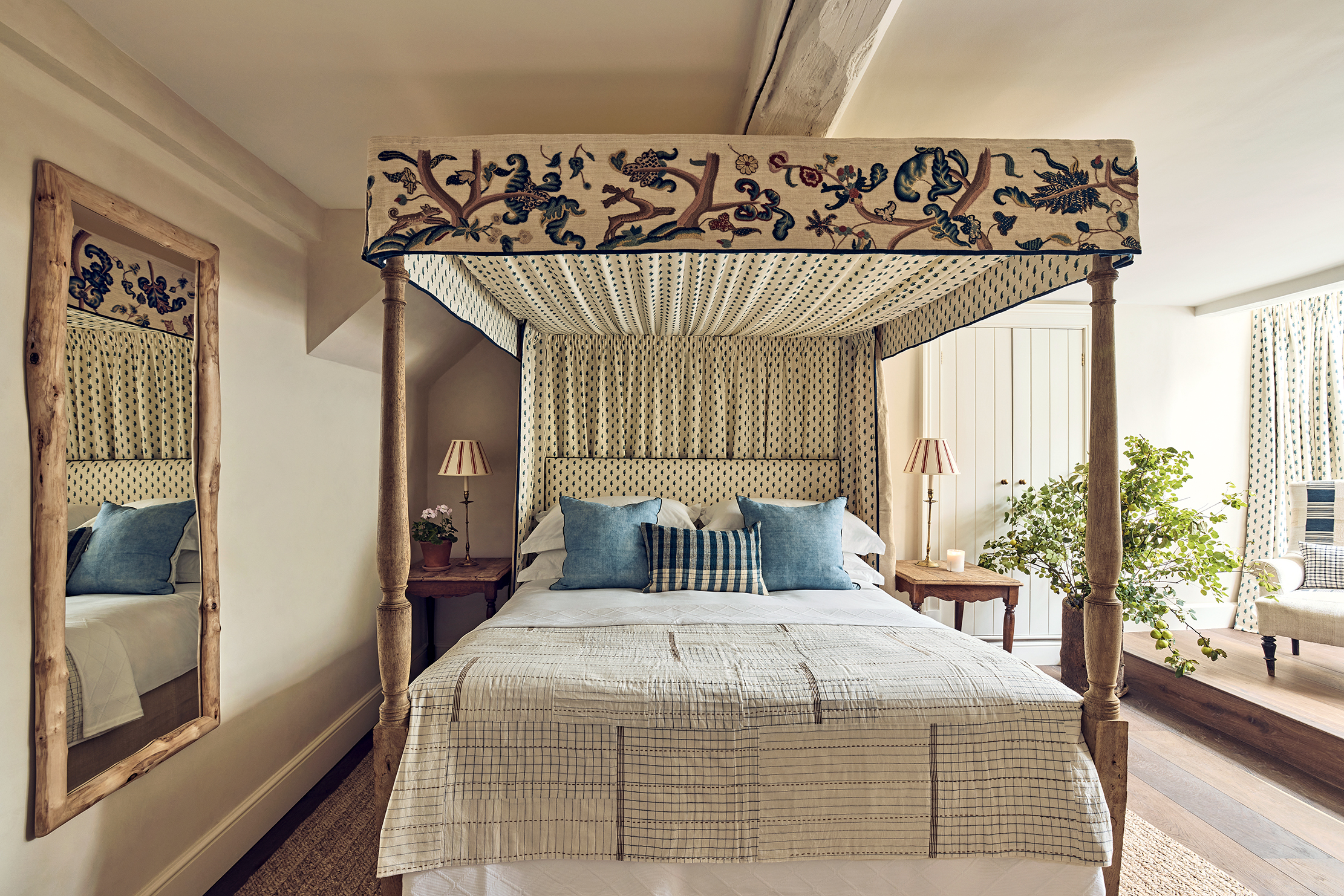
The technique used to make the Bayeux Tapestry is back in fashion after 950 years
Most famously used to create the Bayeux Tapestry, crewelwork is enjoying a revival, says Giles Kime.
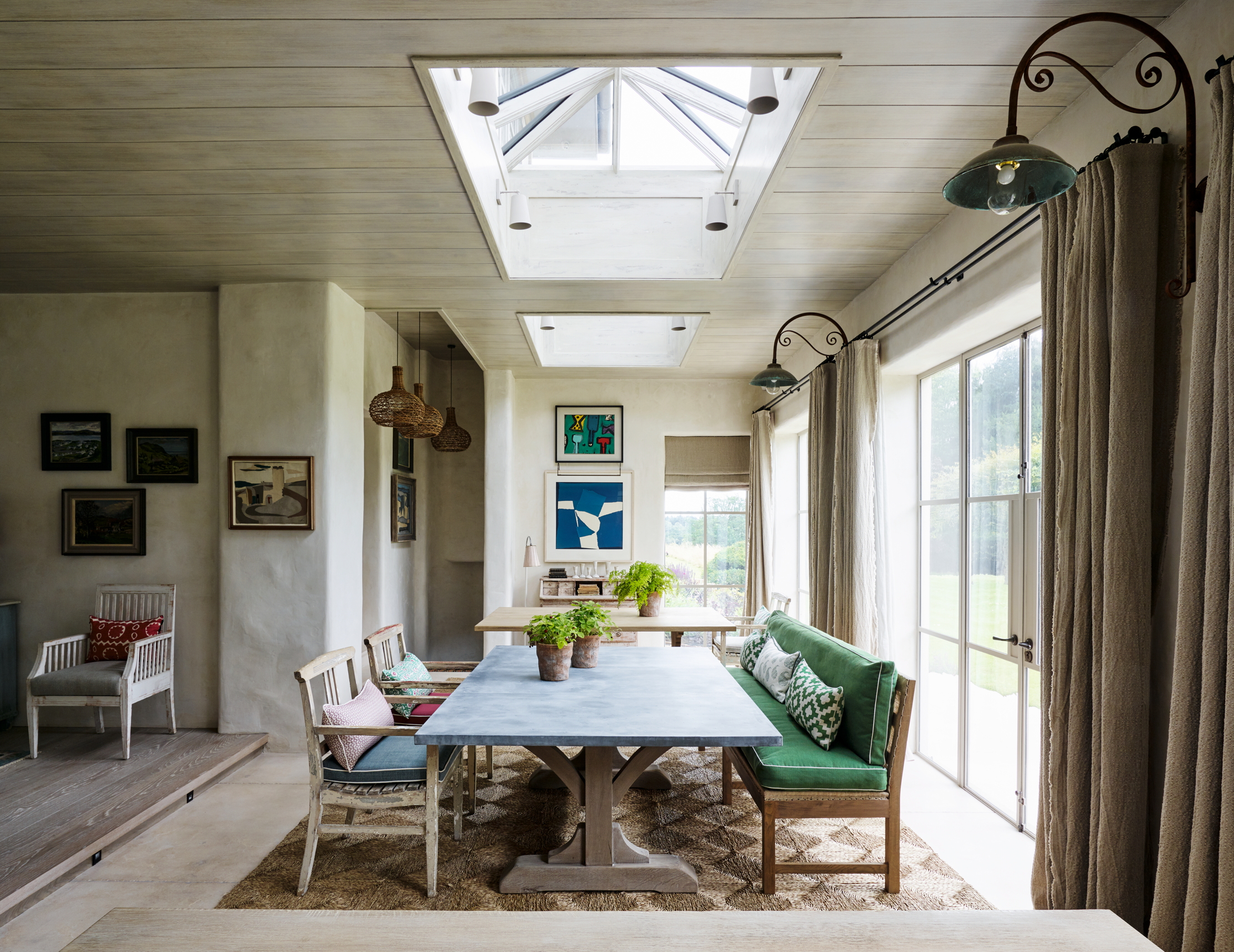
Credit: Richard Powers
How to create the perfect dining room, according to Philippa Thorp
When Philippa Thorp set out to bring a house in Oxfordshire to life, a new light-filled space proved to be
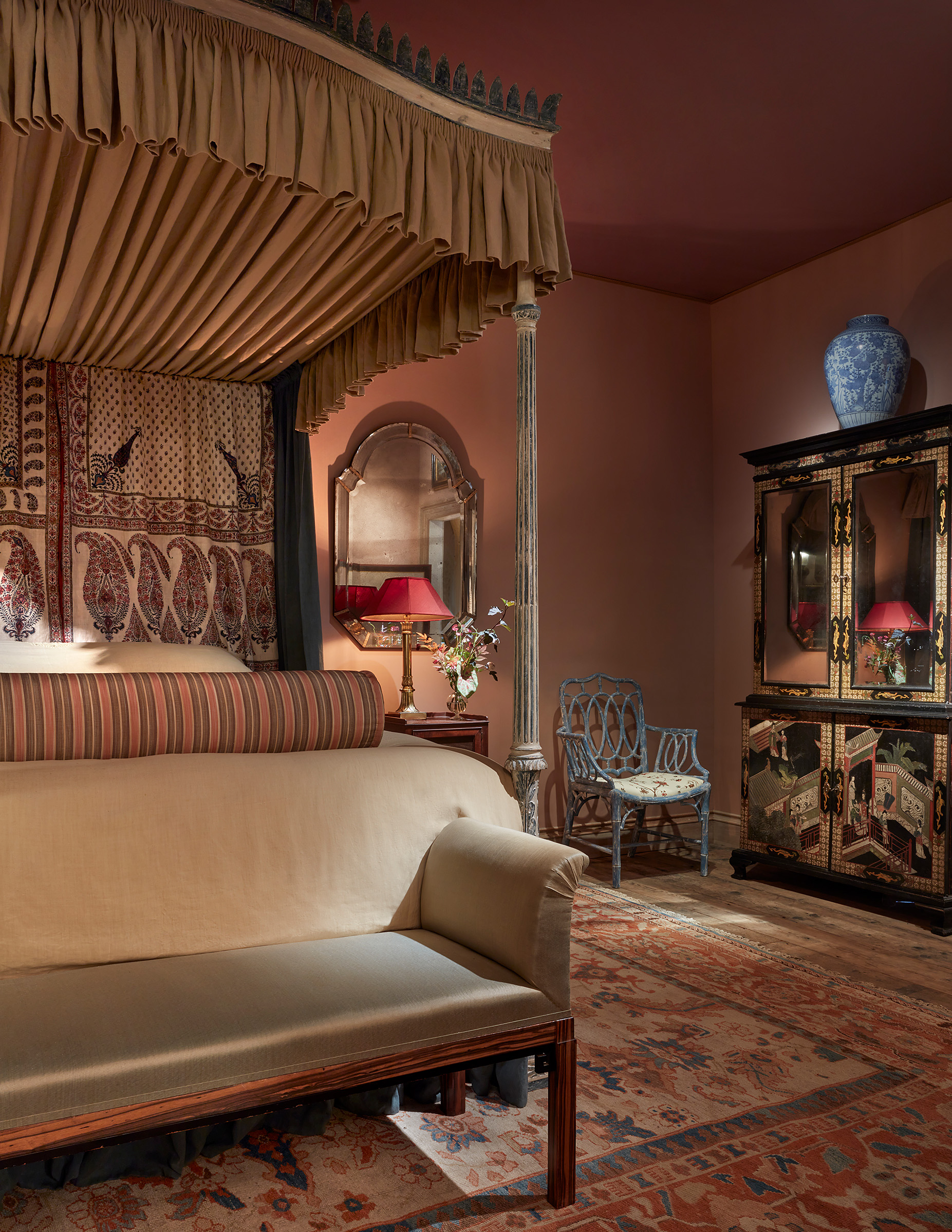
'A delightful parallel universe of creativity' that's been unleashed on London by 'the world's best designers at the top of their game'
Giles Kime takes a look at the 2024 WOW!house event and comes away exhilarated.
Amelia Thorpe is a design and interiors journalist and regular contributor to Country Life. She spent the first half of her career book publishing, before jumping the fence to become a writer — a role that she adores. Amelia lives in London with her husband and two roguish dogs.
-
 'Monolithic, multi-layered and quite, quite magnificent. This was love at first bite': Tom Parker Bowles on his lifelong love affair with lasagne
'Monolithic, multi-layered and quite, quite magnificent. This was love at first bite': Tom Parker Bowles on his lifelong love affair with lasagneAn upwardly mobile spaghetti Bolognese, lasagne al forno, with oozing béchamel and layered meaty magnificence, is a bona fide comfort classic, declares Tom Parker Bowles.
By Tom Parker Bowles
-
 Country houses, cream teas and Baywatch: Country Life Quiz of the Day, April 24, 2025
Country houses, cream teas and Baywatch: Country Life Quiz of the Day, April 24, 2025Thursday's Quiz of the Day asks exactly how popular Baywatch became.
By Toby Keel